A day of high-stakes and thrilling victories in New Delhi, with three wins for White and one for Black. Kateryna Lagno, Zhu Jiner, Polina Shuvalova, and Aleksandra Goryachkina dominated the round
Following three rounds of the Women’s Grand Prix where all games ended in a draw, round four saw intense action on the boards in the third leg. Three out of four games were dramatic from the start but all four ended in victories.
Results of Round Four:
Kateryna Lagno – Vaishali Rameshbabu 1-0
Humpy Koneru – Zhu Jiner 0-1
Aleksandra Goryachkina – BibisaraAssaubayeva 1-0
Polina Shuvalova – Nana Dzagnidze 1-0
The day proved to be a disappointment for Indian players, as both Vaishali Rameshbabu and Humpy Koneru suffered defeats.
Vaishali Rameshbabu’s surprise opening line in the Sicilian did not unsettle Kateryna Lagno who quickly gained control over the position and confidently defeated her opponent. Humpy Konery had a steady game against Zhu Jiner, but a costly blunder in the final moments led to her downfall.
Meanwhile, Shuvalova outplayed Nana Dzagnidze. The Georgian could not find the right plan against Shuvalova and chose the wrong moves leading to a lost endgame with a rook against two bishops.
Aleksandra Goryachkina was the first player of the day to create a much better position on the board, but it took her five hours before BibisaraAssaubayeva finally had to surrender.
Here follows a recap of today’s games.
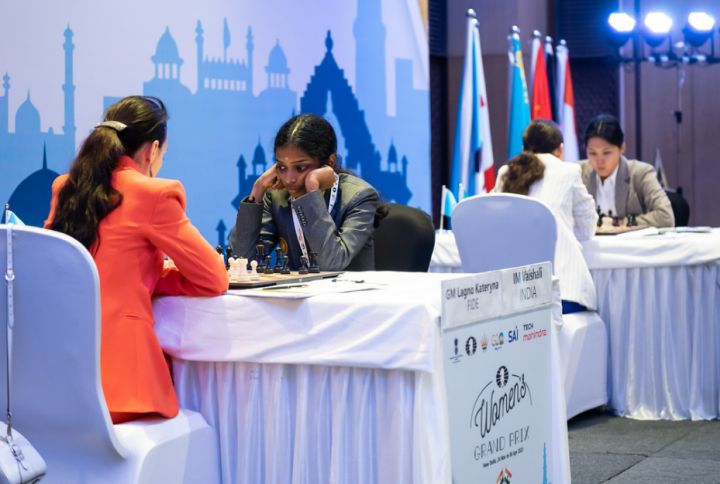
Kateryna Lagno – Vaishali Rameshbabu
This was only the second game in the tournament for Vaishali, given that she was free in rounds two and three.
The opponents had a discussion in the Four Knights Variation of Sicilian Defence, which is considered to be a sharp line. It was Vaishali’s preparation taking Lagno by surprise. However, after spending some time thinking, Kateryna grasped the position and started playing quicker.
On move nine, the Indian played 9…a5 instead of the more common 9…Qb6, which leads to a highly dynamic position on the board.
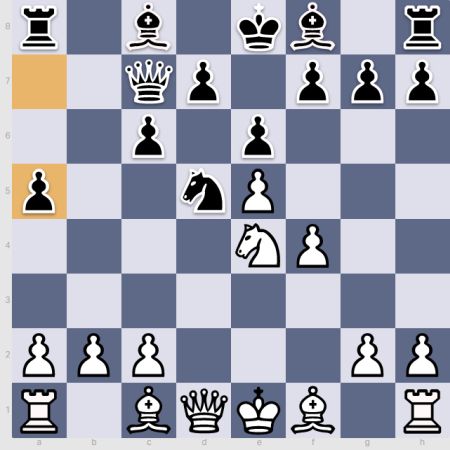
Lagno responded with 10.a3 Qb6 11.c4 – a logical sequence – and after 11…Ne3 12.Qd3 Nf1 13.Rf1, a roughly equal and sharp but by no means new position, emerged on the board. The first important moment came after 17.a4 – the first original move made in the game.
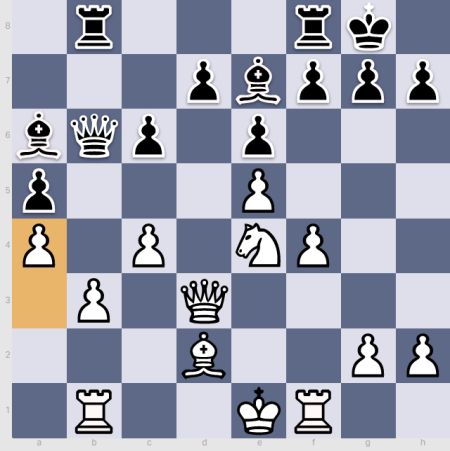
Vaishali opted for 17…f5?!, forcing Lagno to bring her knight to d6. Most likely 17…f6, keeping tension in the centre was a better option.
After 18.Nd6 Bxd6 19.exd6 c5 Kateryna got an edge thanks to control over dark squares. Even more importantly, Black had no active plan, while White had some targets on the board and a clear course of action.
Lagno proceeded to realign her heavy pieces towards the kingside, preparing an attack on the black king, using the advantage of the excellent, centralised e5-bishop. Vaishali eventually had to offer her rook for the white bishop, sacrificing an exchange but hoping to get some squares in return.
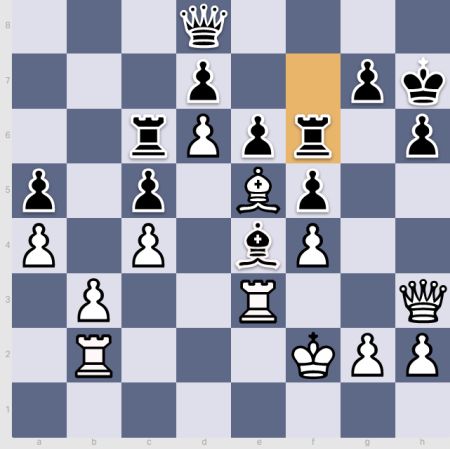
Lagno didn’t take the bait but, instead, used the third rank to transfer her rooks to the kingside and increase pressure. Soon, Vaishali ran out of reasonable options. Still, a short work over Black’s king deserved one more diagram.
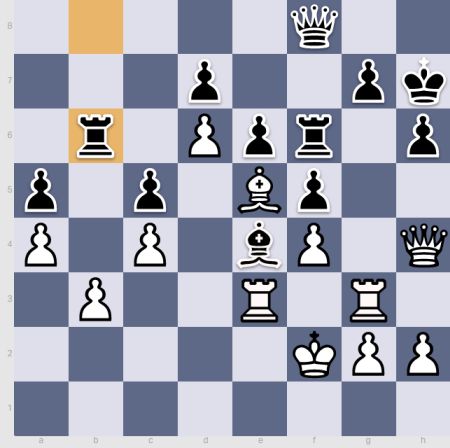
37.Rxg7+ Qxg7 38.Rg3 Qxg3 39.hxg3 Rf7 40.Qd8! 1-0
This is the first victory for Lagno in the tournament, following two draws and a rest day. She is now on two points. Vaishali is still on one point.
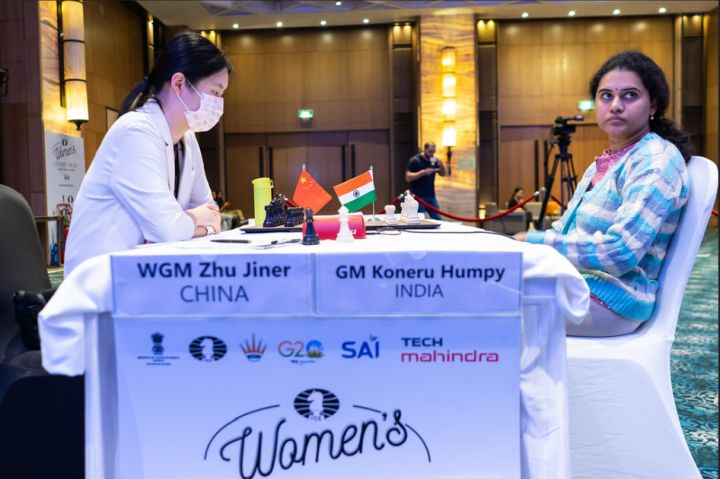
Humpy Koneru – Zhu Jiner
In the standard line of the Nimzo-Indian the opponents followed the footsteps of Rapport and Vidit (Belgrade, 2022) up to move 15. With a lot of positional manoeuvring, both sides maintained equality on the board. Only in the fourth hour of play did one side make a breakthrough.
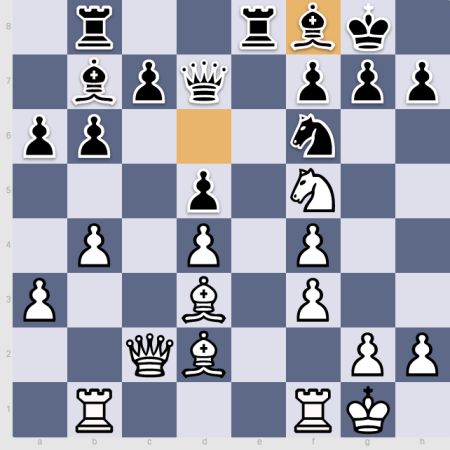
Here Humpy launched an overly-optimistic pawn march on the kingside with 20.g4? This was the beginning of the losing path for White.
After 20…g6 21.Ng3 Zhu relatively quickly found 21… Ne4!! offering a knight sacrifice. White couldn’t take it because she would end up in a completely shattered position.
Humpy played 22.Be1 and had to defend an inferior position with numerous weaknesses. Zhu sacrificed a pawn and emerged much better thanks to the two dominating bishops controlling the diagonals in all four directions on the board.
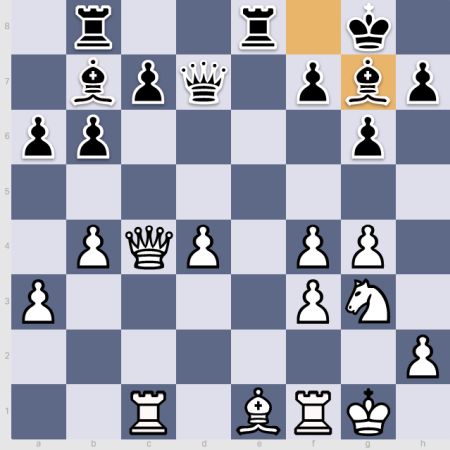
The lesser of many evils for White was to give up her d-pawn immediately by d4-d5, but Humpy made the fatal mistake – 26.Bc3?? After 26…Re3 Koneru’s kingside crumbled, and Black went for a hunt after White’s king: 27.Bb2 Rxf3 28.Rxf3 Bxf3 29.h3 Qd6 30.Qf1 Qxf4 31.Qf2.
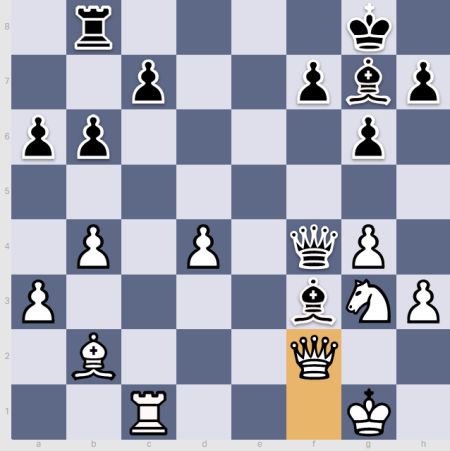
And now a little combination for the end: 31…Bxd4! (a double deflection!) 32.Bxd4 Qxc1+ 33.Kh2 Rd8 34.Ne2 Bxe2 35.Qf6 – the last desperate attempt – 36…Rxd4 37.Qxd4 Qd1 and Black is up a piece and two pawns.
A huge blunder by Humpy Koneru who is now on 1,5 points while Zhu moves up, with 2,5.
Aleksandra Goryachkina – BibisaraAssaubayeva
This was the derby of the round. Goryachkina is one of the top candidates in the Women’s Grand Prix for first two places, while Assaubayeva – two-time world Blitz champion – is the leader in New Delhi after two victories in two rounds she played.
Assaubayeva launched her surprise on the second move by playing e6 after 1.d4 Nf6. She usually plays the King’s Indian, but here she opted for something different. Goryachkina spent five minutes checking her lines before she played 3.g3, going for the Catalan.
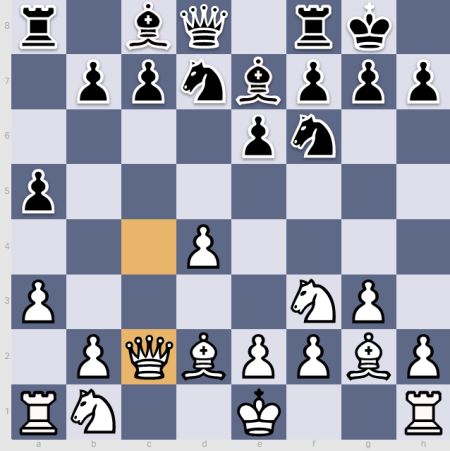
Bibisara seemed to be unfamiliar with the subtleties of the opening as after a couple of inaccuracies – 10…c6?! instead of thematic 10…c5 11.0-0 Ra6? (again, 11…c5 was a better alternative) – she found herself in a cramped position.
Aleksandra was building up pressure with natural moves and avoiding the worst Bibisara decided to part with a pawn, although defending an inferior position with equal material might have been a better option.
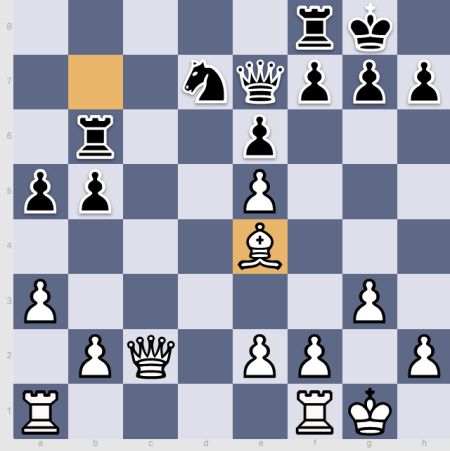
White is a pawn up, has more active pieces, and, simply put, a won position. Bibisara was clearly uncomfortable, sitting tensely in her chair.
Known for her excellent technique, Goryachkina traded the queens as soon as an opportunity presented itself and headed to an ending.
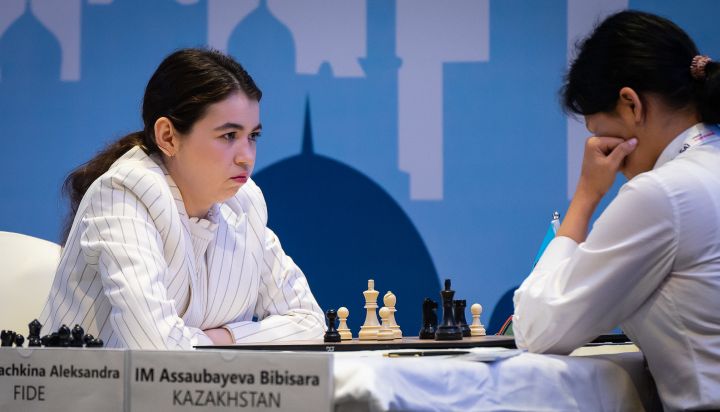
The final portion of the game required precision and patience from Aleksandra, which she demonstrated and gradually brought her opponent to defeat.
It is the first victory for Goryachkina in the tournament, following draws in the first two rounds and a rest day in the third round. She is now on three points. On the other hand, after two victories, BibisaraAssaubayeva suffered a first loss in New Delhi. She has two points.
Polina Shuvalova – Nana Dzagnidze
In another Catalan game of the round, Shuvalova introduced a novelty 12.Rd1, but did not achieve much as Dzagnidze harmoniously arranged her pieces and advanced queenside pawns.
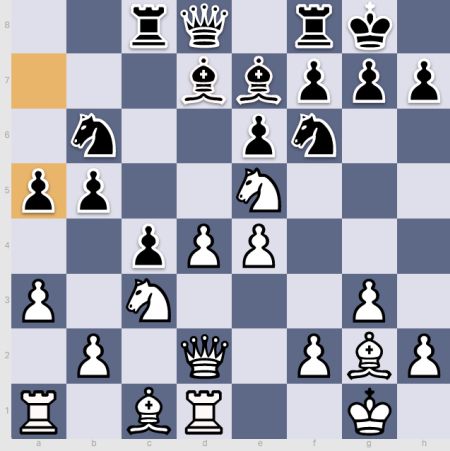
Here Shuvalova opted to strike in the centre with 17.d5. After 17…Bc5 18.dxe6 fxe6 19.Qe2 White had a better pawn structure but the position was double-edge as Black had pressure on the f2 square.
Low on time, Dzagnidze opted to simplify things with 19…b4, which led to a series of exchanges which made things easier for Black who was confidently holding her ground.
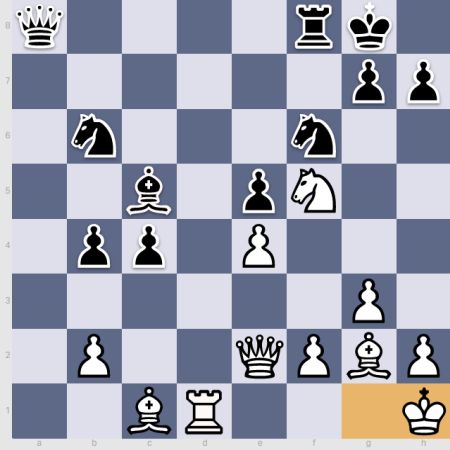
Shuvalova just moved her king from the pinned diagonal. Here Dzagnidze started losing her way: 26…Qa2? – this foray failed to – 27.f4! and after 27… Nbd7? 28.g4 g6? White is winning. Nana gave up two her minor pieces for White’s rook, but it did not help.
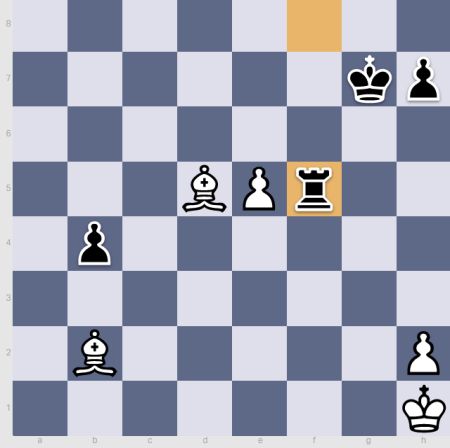
Following the exchange of the queens, the two transitioned to an endgame where White had two bishops against a rook which was absolutely hopeless for Black. Nana tired her last chance by sacrificing an exchange and hoping for a well-known ending with a “wrong” bishop, but Polina did not allow Black’s king to find salvation on the h8-square.
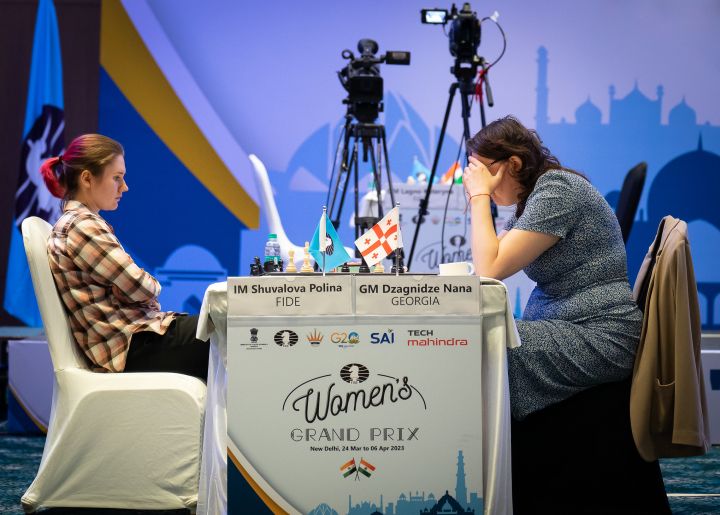
In the post-game interview, Shuvalova said that she thought her opponent had a chance to save a draw.
Standings after the fourth round:
1 | GM | Goryachkina, Aleksandra | 2576 | FID | 3 |
2 | WGM | Zhu, Jiner | 2489 | CHN | 2½ |
3 | GM | Harika, Dronavalli | 2511 | IND | 2½ |
4 | IM | Shuvalova, Polina | 2484 | FID | 2½ |
5 | GM | Lagno, Kateryna | 2560 | FID | 2 |
6 | IM | Assaubayeva, Bibisara | 2440 | KAZ | 2 |
7 | GM | Dzagnidze, Nana | 2525 | GEO | 1½ |
8 | GM | Batsiashvili, Nino | 2489 | GEO | 1½ |
9 | GM | Koneru, Humpy | 2576 | IND | 1½ |
10 | IM | Vaishali, Rameshbabu | 2433 | IND | 1 |
The fifth round of the third leg of the Women’s Grand Prix will take place on Thursday, 30th March, at 3 PM local time.
The pairings of the fifth round are:
Zhu Jiner – Katerina Lagno
Nana Dzagnidze – Humpy Koneru
BibisaraAssaubayeva – Harika Dronavalli
Vaishali Rameshbabu – Nino Batsiashvili
Polina Shuvalova and Aleksandra Goryachkina have a free day.
Text: Milan Dinic
Photo: Ismael Nieto
About the Women’s Grand Prix
The FIDE Women’s Grand Prix consists of four tournaments played between September 2022 and May 2023 and includes 16 women players who take part in three of the four tournaments. The two players who score the greatest number of cumulative points in the series shall qualify for the FIDE Women Candidates Tournament 2023-24.
The players participating in the Women’s Grand Prix have been selected based on their performance in key FIDE events and their ELO. Also, each of the four local tournament organisers has a right to nominate a player of their choice.
The time control for the tournament is 90 minutes for the first 40 moves, followed by 30 minutes for the rest of the game with an increment of 30 seconds per move starting from move one.
The total prize fund for each one of the four events is €80,000, with another €80,000 being distributed among the top eight players in the overall standings for the Grand Prix series.
General information about the venue and the dates
The third leg of the Women’s Grand Prix will take place in New Delhi’s Leela Ambience Convention Hotel. The five-star hotel is designed to cater to business events and large meetings and should make an ideal place for a tournament of this level.
The rounds will be played each day from 3 PM local time (9.30 GMT).
For more information about the event, visit:https://womengrandprix.fide.com/.


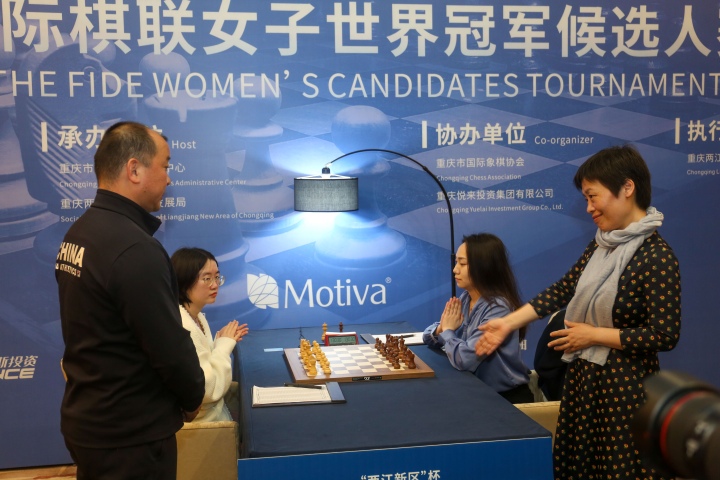
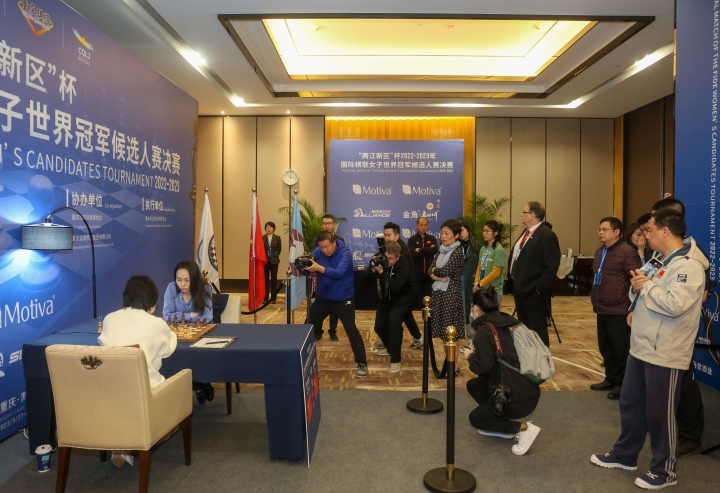




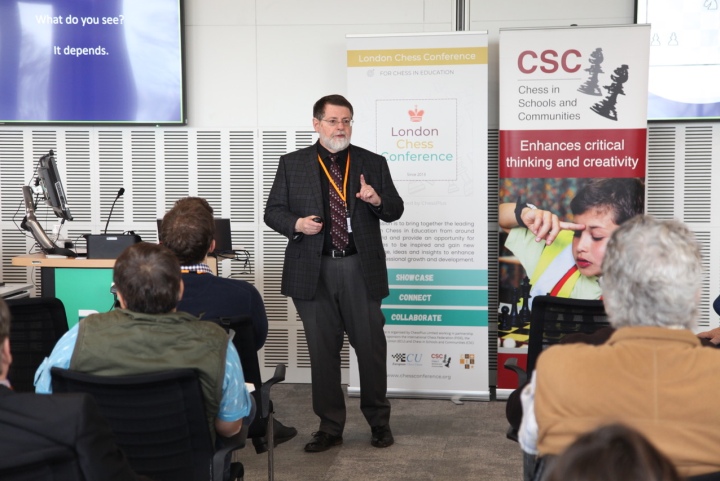

 From L-R: Rita Atkins, Secretary FIDE Education Commission, John Foley, Conference Director, and Dana Reizniece-Ozola, FIDE Managing Director
From L-R: Rita Atkins, Secretary FIDE Education Commission, John Foley, Conference Director, and Dana Reizniece-Ozola, FIDE Managing Director